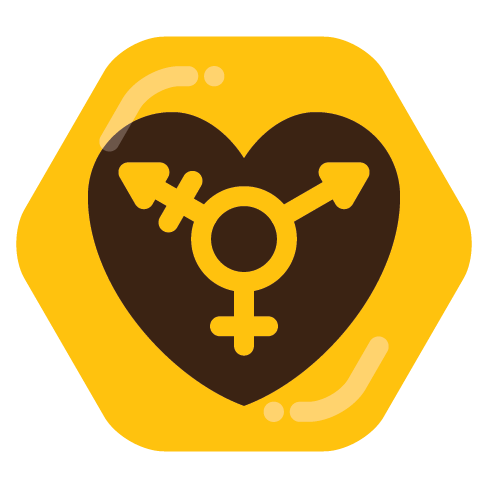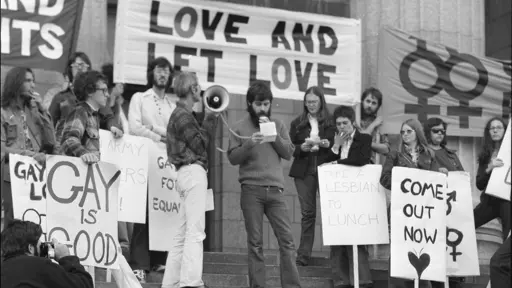In an early scene in Parade: Queer Acts of Love & Resistance, dozens of people clad in leather jackets, blazers and bell bottoms march toward the Parliament Buildings in Ottawa. Some carry rain-battered signs with slogans like “We will not hide our love away,” while others link arms and huddle under umbrellas. The camera is situated in the midst of the crowd, and as viewers, it feels as though we’re brushing shoulders with the protestors as they pass by. Despite the dreary skies and relentless downpour, the protestors look determined, joyful.
This vibrant footage of the 1971 We Demand march, Canada’s first LGBTQ2S+ mass protest, hasn’t been seen in over half a century. It had been stored in a shoebox of film reels belonging to activist Jearld Moldenhauer, who photographed many early queer demonstrations in the country. During an interview with Moldenhauer, Parade’s team discovered the existence of the footage and, with his permission, digitized it. The footage brings colour to a milestone in the history of queer activism in Canada, capturing the protest on grainy, nostalgic Super 8 film. It shines as an exemplar of the kind of archival work that powers the new documentary Parade, directed by Winnipeg filmmaker Noam Gonick and produced by Toronto’s Justine Pimlott.


